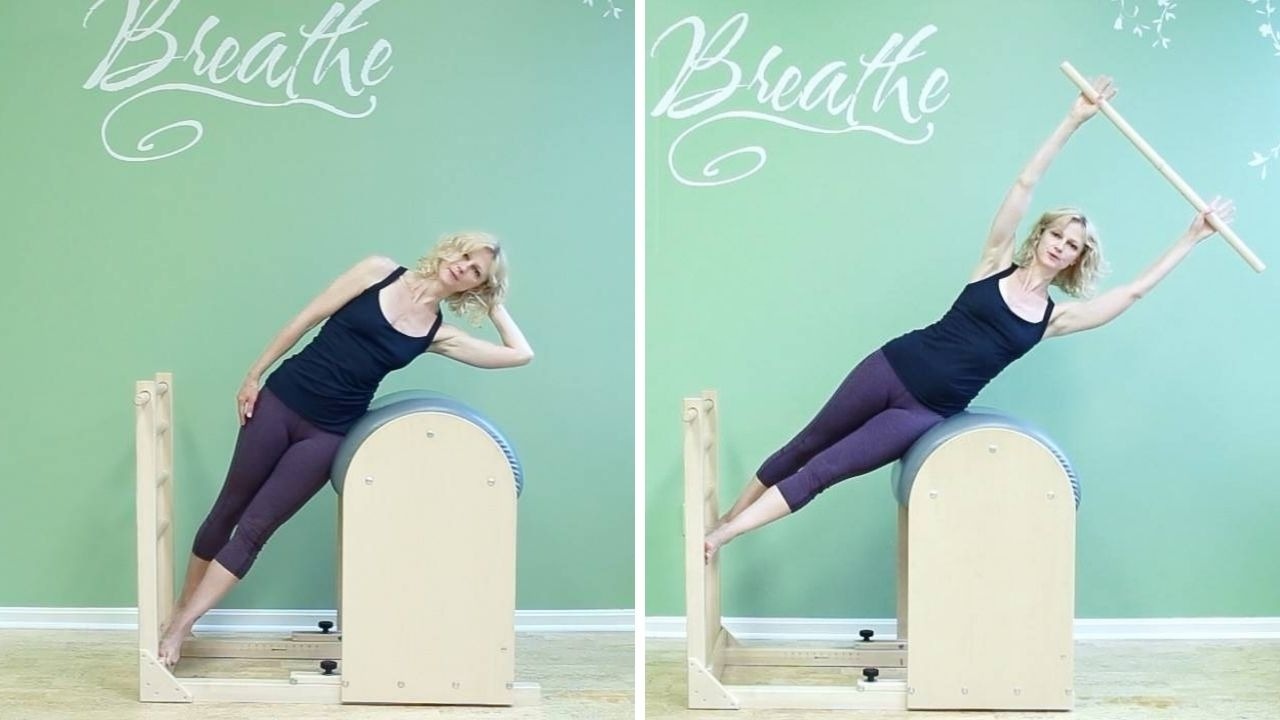Side Sit Up on the Ladder Barrel
Feb 20, 2019
Side Sit Up is one of my absolute favorite exercises, of all time. And it's one of my students' least favorite exercises, of all time! 😁😇
One of my students once explained that "It never gets easier." I get that - for a student - that can be frustrating. For the teacher though, it's pure magic, because it's an exercise that will always be effective. I will never have to think of a different or more challenging exercise.
That being said, it doesn't have to be out of reach for a beginner student or someone who is conditioned or dealing with an injury.
I've found a way to practice this amazing spine stability exercise with 98% of my students.
Like any good Pilates exercise, it comes with wonderful regressions which allow the skilled Pilates instructor to choose the appropriate variation for students of various skill levels. Beautiful.
All right, let's get into it.
Side Sit Up - Fundamental Level
- Standing on the floor is the easiest way to get started with Side Sit Up.
- Position your outside leg behind your inside leg.
- Begin by finding a neutral spine position and holding it. That's easier than it sounds. As you can see in the video thumbnail above, the body is on a diagonal and only the hips are touching the barrel. It can be difficult for you or your student to find the continuous line starting with your feet up towards your head. Help your student by telling them which waist to shorten or which to lengthen. If you're by yourself, use a mirror.
- Reach one arm down towards your feet and support your head with your other arm to start. If necessary you can reach your arm to the ladder and pull yourself out of the position.
- Check in with your low back. Do you feel it tweaking or working? If it is, that's your QL working. Even though yes, it is a lateral flexion muscle, BUT, it is also an extension muscle, and to me, that means your spine is slightly extended or rotated. I would recommend rotating your upper body slightly towards the wall, just enough that you feel the work in your abdominals or on your side, and not in your back.
- Once you feel your core working to hold you, we can add a small movement. As you bend towards the barrel, put your emphasis in moving in the longest possible arc. This means lengthening up is more important than bending to the side. Don't let gravity win. Gravity is your "weight" or "resistance" in this exercise, and if you give in to gravity, you're completely losing the benefit. So, think "up and over" instead of "down and up."
- Over time, you can place both hands behind your head, which will increase the load on your obliques and spinal stabilizer muscles.
- Don't forget to practice the other side. Don't be surprised if one side is much harder than the other.
Side Sit Up - Intermediate/ Advanced Level
If the basic version works well and you definitely feel ready for a challenge, then step your feet up onto the ladder.
- Your outside/top leg is still behind the inside/bottom leg.
- Find your neutral spine position on the diagonal.
- Begin with one hand behind your head >> progress to both hands behind your head >> and after many weeks of practicing this consistently, try the dowel overhead variation. 😅
- Go up and over, not down and up.
To be honest, I can maybe do 3 or 4 repetitions before I lose my form and start "cheating".
Common Mistake in Side Sit Up
You would never dream of cheating in an exercise, right? But what if you didn’t even realize you were doing it? Our body often tries to “help” us by subtly altering a movement to make it easier. Check out this video for a sneaky way your elbow might try to assist you during Side Sit Up on the Ladder Barrel.
I'd love to hear from you: Which is your favorite way to practice Side Sit Up? Shoot me an email.










